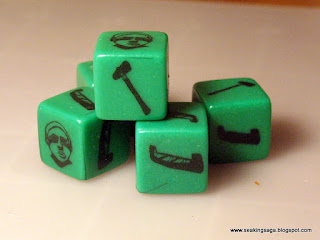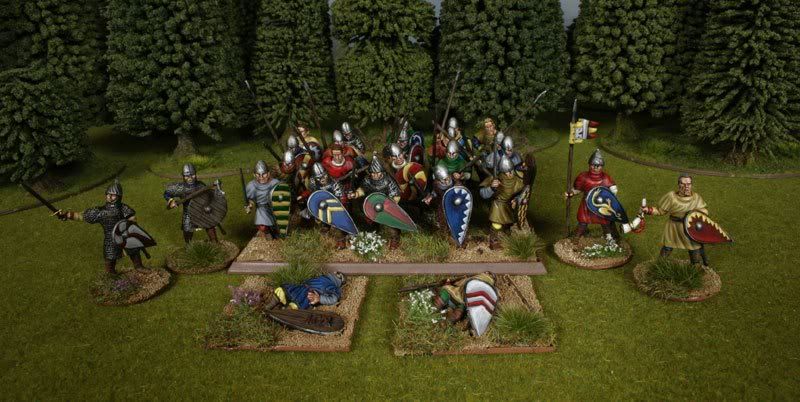Tactically, Norman infantry and archers initiated contact with the enemy, the cavalry holding back until the point of maximum impact. The knights did not get all the glory, though. The Bayeux Tapestry does depict England's King Harold's death by an arrow to the head.
 |
| Gripping Beast Norman Spearmen |
The three figures below are from Black Tree Designs. I recently made my first purchase from the American distributor, and I am impressed. The finish is a bit rough in some places, but the posing is unique and natural; the company's delivery was very fast.
There is some debate about whether crossbow units were present at Hastings. Nonetheless, they were an integral part of the Norman warmachine in Italy and undoubtedly accompanied Norman knights on the First Crusade.
 |
| Norman Crossbows, Crusader Miniatures and Black Tree Designs |
For a challenge, I recommend playing SAGA as the Normans using the historical percentages from Hastings. In other words, with a six point force, at most two units can be mounted.
Gravett, Christopher. Hastings 1066 The Fall of Saxon England London: Osprey Publishing, 1992.
Battle of Hastings scene by scene: http://www.bayeuxtapestry.org.uk/BayeuxContents.htm


















.jpg)




